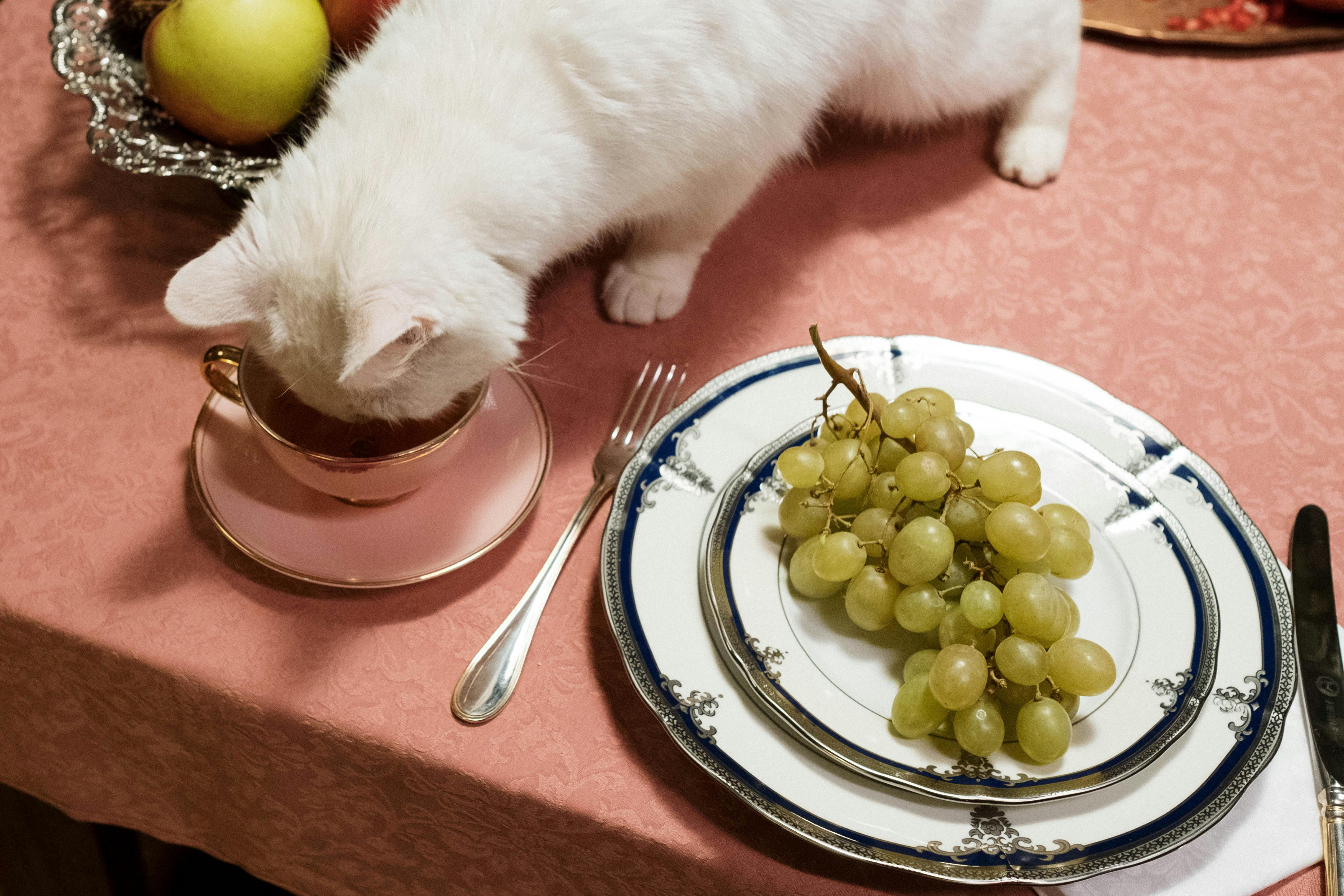Catnip tea is a great way to give your feline friend a calming, refreshing beverage. It is also a great way to bond with your cat and keep them happy and healthy. Making catnip tea is easy and can be done with just a few ingredients that you probably already have in your kitchen. In this article, we will discuss how to make catnip tea for cats so you can make your cat their very own special drink.Catnip tea is an herbal tea made from the dried leaves and stems of the catnip plant, which is scientifically known as Nepeta cataria. Catnip tea has a mild flavor and is believed to have calming effects. It contains no caffeine and is often used to help relax and reduce stress.
Gather the Necessary Materials
Before you start any project, it is important to make sure you have all of the necessary materials. This will help to ensure that your project is completed on time and with the best results. When gathering materials for a project, consider what type of materials will be needed and if any specialized tools are necessary.
For example, if you are planning to build a new deck, you will need wood, screws, nails and other supplies. You may also need a saw or drill and other power tools to help make your deck look professional. Make sure that you have all of the materials together before beginning the project so that there are no unexpected delays or problems.
In addition to gathering materials for the project itself, it may be helpful to have some additional items on hand for safety purposes. For instance, when building a deck, you should have safety glasses and gloves in case debris or wood chips fly into your eyes or hands. Having these items close by can help protect both yourself and anyone else who is helping with the project.
Gathering all of the necessary materials before starting any project is an important step in ensuring success. Take some time to plan ahead and make sure that you have everything needed for the job so that it can be completed efficiently and properly.
Placing Catnip in a Tea Infuser
Catnip is an herb that can be used to make tea, and placing it in a tea infuser is one of the easiest ways to do so. Catnip has many medicinal properties, and when brewed properly, it can provide relief from a variety of ailments. By using a tea infuser, you can ensure that the catnip is brewed correctly and get the most out of each cup.
The first step in using a tea infuser to brew catnip is to measure out the desired amount. The amount you use will depend on your taste preference and how strong you want the tea to be. Once you have measured out your catnip, fill up the infuser with it. Make sure that there are no clumps or bits of catnip sticking out as this will affect the flavor of your tea.
Next, place the infuser into your mug or teapot and add boiling water. Let the water sit for about five minutes before removing the infuser so that all of the flavors can be extracted from the herb. Once all of the flavors have been extracted, you can remove the infuser and enjoy your cup of catnip tea!
Brewing catnip in a tea infuser is quick and easy, and it allows you to get all of its beneficial properties without having to deal with loose leaves or messes associated with other methods. With just a few simple steps, you can be enjoying a cup of soothing and relaxing catnip tea in no time!
What is Boiling Water?
Boiling water is simply the process of heating water to its boiling point, which is 212°F (100°C) at sea level. When the liquid reaches this temperature, it rapidly vaporizes into steam. The steam created can be used for a variety of purposes such as heating, sterilization, cooking, and generating power.
How to Boil Water?
Boiling water is a basic kitchen skill that anyone can learn. To do so, you will need a pot or pan with a lid, some water, and heat source such as a stovetop or hot plate. Begin by filling the pot or pan with enough water to cover whatever you are planning to cook. Place the pot on the heat source and bring it to a boil. Once boiling, reduce the heat slightly and maintain a rolling boil for the desired amount of time. Once finished, remove from heat and use caution when handling the hot pot.
Why Boil Water?
Boiling water is an effective way to purify it for drinking or cooking purposes. By bringing it to a rolling boil for at least one minute you can kill off any harmful bacteria that may be present in the water. Boiling also serves as an effective way to quickly cook food such as rice, pasta, vegetables, and even eggs without having to wait too long for them to cook through. Lastly, when used in combination with other methods such as filtration or distillation boiling can help make contaminated water safe for drinking.
Safety Tips When Boiling Water
When boiling water there are several safety tips that must be kept in mind in order to avoid injury or burns. Be sure that all handles on pots and pans are secure before placing them on a heat source and use oven mitts when handling hot pots or pans afterwards. Additionally, make sure that there is adequate ventilation when boiling indoors and avoid splashing hot liquids onto yourself or others while stirring.
Prepare Tea Leaves
To prepare the tea leaves for steeping, measure 1 teaspoon of loose-leaf tea or 1 tea bag per 8 ounces of water. For a stronger cup, use more tea leaves. Place the measured tea in a teapot or teacup if using loose-leaf tea, or in a mug if using a teabag.
Heat Water
Heat water to near boiling temperature, approximately 205°F–212°F (96°C–100°C). If you don’t have access to boiling water, you can bring cold tap water to a boil on the stovetop or in an electric kettle.
Pour Water Over Tea Leaves
Once your water has reached the correct temperature, pour it over the tea leaves in your teapot or mug. For loose-leaf tea, allow the spout of the kettle to come into contact with the leaves as you pour. This will ensure that all of them are exposed to the hot water and will steep evenly.
Steep For 5-10 Minutes
Allow your tea to steep for 5–10 minutes depending on how strong you would like it. After this time is up, remove either the teabag or use a strainer to remove any remaining loose-leaf tea from your cup or teapot. You may also wish to add any additional ingredients such as milk, sugar, honey, etc., at this point if desired. Enjoy!

Remove Tea Infuser
Removing a tea infuser can be a challenging task, especially if you are not familiar with the process. The best way to remove a tea infuser is to use a pair of tongs or kitchen scissors. Be sure to use caution when using these tools, as you do not want to break or damage the infuser. Start by grasping the handle of the infuser with either your tongs or kitchen scissors, and gently pull it out of the cup or teapot. If it does not come out easily, try twisting it slightly while pulling. Once you have removed the tea infuser, discard the used tea leaves and rinse off any residue in warm water.
It is also important to clean your tea infuser after each use. This will ensure that your cup of tea remains fresh and flavorful for each subsequent brew. To clean the infuser, simply rinse it in warm water and then dry thoroughly before storing away for future use.
Instructions for Brewing Tea
Brewing tea is a simple process that will help you make your favorite cup of tea. Here are some easy instructions for brewing tea:
First, choose the right type of tea for your taste. Black teas, oolong teas, and green teas all have their own unique flavors. Once you’ve chosen your tea, measure the right amount of leaves or bags for the amount of water you’ll be using.
Next, boil the water to the proper temperature. Different types of teas should be brewed with different temperatures; black teas should be brewed with boiling water, oolong teas at 185 to 208 degrees Fahrenheit, and green teas at 140 to 185 degrees Fahrenheit. Once the water is boiled, pour it over the leaves or bag and let steep for 3 to 5 minutes.
After steeping the tea, carefully remove the leaves or bag from your cup. If desired, add honey or lemon to your cup for extra flavor. Enjoy your freshly brewed cup of tea!
Cool The Catnip Tea
Catnip tea is a popular herbal remedy for cats that can provide relief from stress and anxiety. It is also known to help cats relax and have a goodnight’s sleep. While catnip tea can be enjoyed by cats of all ages, it is important to remember that it must be cooled before giving it to your pet. Cooling the catnip tea helps preserve its potency and make it easier for cats to drink.
To cool the catnip tea, it should be placed in the refrigerator for up to an hour before serving. This will help reduce the temperature of the tea so that it won’t be too hot when served. If you do not have access to a refrigerator, you can also use an ice cube tray or a cold pack to cool down the tea quickly. Place the ice cubes or cold pack in a bowl of water and submerse the container of catnip tea in it for about 15 minutes until it has cooled down sufficiently.
Once the catnip tea has cooled down, you can serve it in your pet’s bowl or use a dropper to deliver small amounts directly into their mouth. Be sure to discard any unused catnip tea after 24 hours as this will help ensure its freshness and potency when served again.

Conclusion
Catnip tea can be a great way to provide your cat with an herbal tea that is both beneficial and enjoyable. The process is straightforward and the ingredients are readily available. Catnip tea is an excellent way to keep your cat healthy, while still providing them with the pleasure of an herbal tea. The best part is that you can make it yourself, so you know exactly what’s in the tea. With a few simple steps, you can create a safe, delicious cup of catnip tea for your feline friend. Make sure to always consult your veterinarian before giving any herbal remedies to your pet, as they may react differently depending on individual factors.
Overall, making catnip tea for cats is a fun and easy way to provide them with an enjoyable and beneficial herbal remedy. The process is simple and the ingredients are easy to get hold of. You can also be sure of what goes into the tea when you make it yourself, which means that there’s no need to worry about potential risks associated with store-bought teas or supplements. With these tips in mind, you can easily make a cup of catnip tea for your furry friend!
